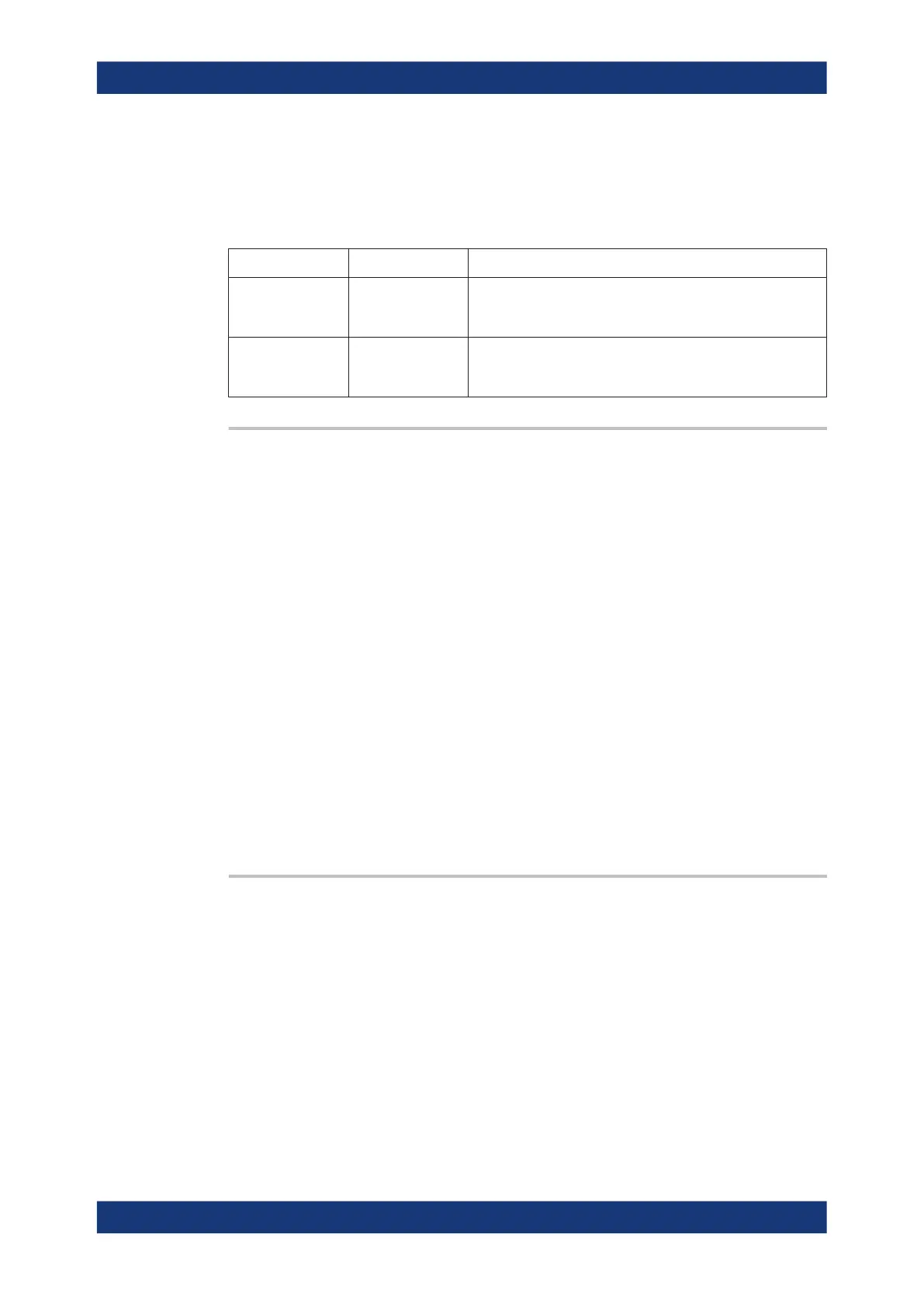Command reference
R&S
®
ZNB/ZNBT
1058User Manual 1173.9163.02 ─ 62
Usage: Query only
Options: R&S ZNB/ZNBT-K20
Manual operation: See "Extended Info" on page 708
<Data> omitted <Data> = ALL
Stimulus axis:
time
<rise time> <rise time>,<rise distance>, <start threshold crossing time>,
<start threshold crossing voltage>, <stop threshold crossing
time>, <stop threshold crossing voltage>
Stimulus axis:
distance
<rise distance> <rise distance>, <rise time>,<start threshold crossing dis-
tance>, <start threshold crossing voltage>, <stop threshold
crossing distance>, <stop threshold crossing voltage>
CALCulate<Chn>:TTIMe:STATe <Boolean>
Enables/disables the Rise Time Measurement.
Note: The rise time measurement can only be enabled if the active trace is real
(CALCulate<Chn>:FORMat REAL), Time Domain is enabled (CALCulate<Chn>:
TRANsform:TIME:STATe ON), and the Low Pass Step time domain transform is used
CALCulate<Chn>:TRANsform:TIME[:TYPE] LPASs and CALCulate<Chn>:
TRANsform:TIME:STIMulus STEP). The latter, in turn, requires the stimulus grid to
be harmonic. This can be achieved, for example, using [SENSe<Ch>:]HARMonic:
AUTO ON.
Suffix:
<Chn>
.
Channel number used to identify the active trace
Parameters:
<Boolean> ON – Rise time measurement enabled
OFF – Rise time measurement disabled
*RST: OFF
Options: R&S ZNB/ZNBT-K20
Manual operation: See "Rise Time" on page 708
CALCulate<Chn>:TTIMe:THReshold <ThresholdEnum|LowerThreshold>[,
<UpperThreshold>]
Defines the lower/upper threshold for the rise time measurement.
The thresholds can either be specified by enum constants for the standard 10–90% or
20–80% rise times, or as integer percentages.
Suffix:
<Chn>
.
Channel number used to identify the active trace
SCPI command reference
